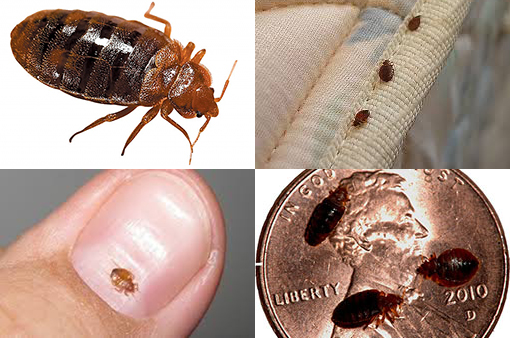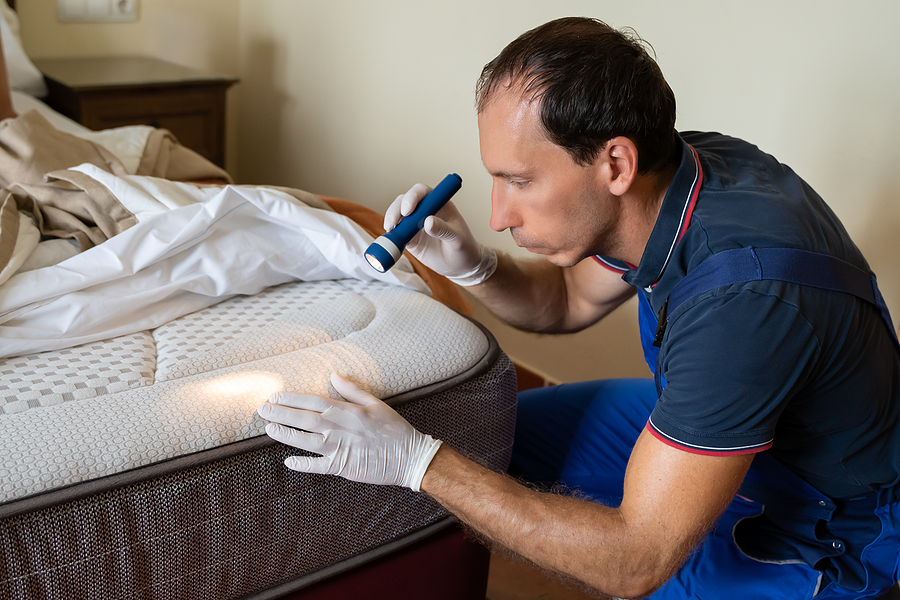Obtain Enlightened Regarding the Sorts Of Parasite Control Approaches and Their Advantages for Home Owners
Comprehending the various bug control methods readily available to house owners is important for reliable insect monitoring. Property owners that are well-informed can make critical choices that not only address bug issues however additionally improve the total quality of their living atmosphere.
Chemical Pest Control Techniques
Chemical parasite control methods are an important component of integrated parasite management methods for home owners seeking efficient remedies to pest infestations. These techniques entail the application of chemical materials developed to get rid of or hinder pests that endanger personal effects, health and wellness, and convenience. Usual chemicals used include insecticides, herbicides, fungicides, and rodenticides, each tailored to target particular bugs.
The key benefit of chemical parasite control is its fast efficiency; lots of solutions give prompt outcomes, reducing pest populations significantly quickly. Additionally, advancements in chemical formulas have led to products that are much more environmentally friendly and have lower poisoning degrees for non-target organisms when applied correctly.

Biological Bug Control Techniques
Natural bug control methods have gotten prestige as property owners seek more secure and more sustainable options to typical chemical approaches. Biological bug control strategies utilize natural predators, parasites, or pathogens to take care of bug populaces properly. This method is not only ecologically pleasant yet additionally minimizes the risk of damage to non-target types, consisting of valuable insects and wildlife.
One of the most common biological control methods includes introducing natural predators into the environment. Ladybugs can be utilized to manage aphid populations, while nematodes target soil-dwelling insects like grubs. Furthermore, parasitoids-- organisms that survive on or within a host-- can be utilized to control particular insect species by laying eggs inside them, ultimately leading to their death.
An additional strategy is the usage of biopesticides, which are stemmed from natural materials such as plants, minerals, or bacteria (bed bug exterminator). These products can effectively target parasites while posturing marginal danger to humans and pets. In general, biological parasite control strategies offer property owners with an efficient methods of insect management that straightens with environmental principles, advertising a much healthier living setting while minimizing reliance on artificial chemicals
Mechanical Bug Control Strategies
Mechanical parasite control methods encompass a selection of methods that literally avoid or eliminate bugs without making use of chemicals. These strategies are particularly helpful for house owners seeking ecologically friendly options while guaranteeing the safety of their living spaces.
One usual approach is the use of barriers, such as catches, internet, and displays, which avoid parasites from getting in homes or certain areas. For example, setting up home window screens can successfully keep insects out, while utilizing physical obstacles around yards can deter larger parasites like rabbits or deer. Furthermore, mechanical catches created for rats can record and remove these insects without the requirement for hazardous materials.
One more effective method involves the use of vacuum cleaners and mops to get rid of insects straight from surface areas. Normal cleansing and maintenance can substantially minimize pest populaces by eliminating food resources and concealing areas. Moreover, using tools like ultrasonic pest repellents can deter numerous bugs via sound waves that are undesirable to them but inaudible to human beings.
Cultural Pest Control Practices
Cultural pest control practices concentrate on customizing the atmosphere and monitoring methods to create conditions that are less favorable to pest invasions. These practices are fundamental in preserving a well balanced community and minimizing the reliance on chemical treatments. By changing farming practices, house owners can effectively hinder bugs while advertising plant health Visit This Link and wellness.
One usual approach consists of crop rotation, which interferes with the life process of insects by altering the types of plants grown in a particular area (bed bug exterminator). This not just reduces pest populations however likewise enhances soil health. Furthermore, intercropping-- planting varied plants in closeness-- can confuse insects and minimize their ability to locate their preferred host plants
Water administration is another vital facet of social techniques. Proper watering strategies can avoid standing water, which functions as a reproduction ground for insects and various other insects. Additionally, preserving cleanliness around the home, such as on a regular basis eliminating debris and food waste, can dramatically minimize parasite destination.
Incorporating these social techniques right into a thorough pest management strategy enables homeowners to produce an environment that normally hinders parasites, therefore boosting the performance of various other control techniques while promoting lasting gardening and landscaping.

Integrated Bug Monitoring Approaches
Integrated Bug Monitoring (IPM) stands for an alternative approach that incorporates various approaches to properly take care of bug populations while lessening ecological influence. This methodology integrates biological, cultural, physical, and chemical practices to achieve sustainable parasite control. By examining pest populaces and their natural opponents, IPM highlights surveillance and recognizing bugs before carrying out best termite pest control control actions.
One of the core concepts of IPM is using thresholds, which develop the degree of parasite activity that requires intervention. This guarantees that treatments are used just when required, lowering the dependence on chemical pesticides. Biological control approaches, such as presenting all-natural predators or bloodsuckers, job in combination with social methods like crop turning and habitat manipulation to interfere with pest life process.
In addition, IPM urges using least-toxic chemical choices when treatment is required, prioritizing items that pose minimal danger to non-target organisms and the atmosphere. For house owners, taking on IPM comes close to not only enhances the efficacy of parasite management however additionally promotes a healthier living setting, cultivating biodiversity and decreasing chemical direct exposure. Inevitably, IPM empowers property owners to make educated choices that stabilize pest control with environmental obligation.
Verdict
In conclusion, recognizing the different pest control techniques equips house owners to make he has a good point informed choices relating to pest monitoring. Each method-- chemical, organic, mechanical, social, and integrated bug monitoring-- supplies distinct advantages that cater to different needs and choices.
Recognizing the numerous bug control methods available to homeowners is crucial for effective insect administration.Chemical parasite control approaches are an important element of integrated pest monitoring approaches for house owners looking for efficient solutions to pest infestations. In general, biological pest control methods give home owners with an efficient methods of insect management that straightens with environmental principles, advertising a much healthier living setting while decreasing dependence on artificial chemicals.
Social pest control methods concentrate on changing the setting and management techniques to create conditions that are less favorable to pest invasions.In verdict, recognizing the numerous parasite control methods empowers property owners to make educated decisions relating to pest monitoring.